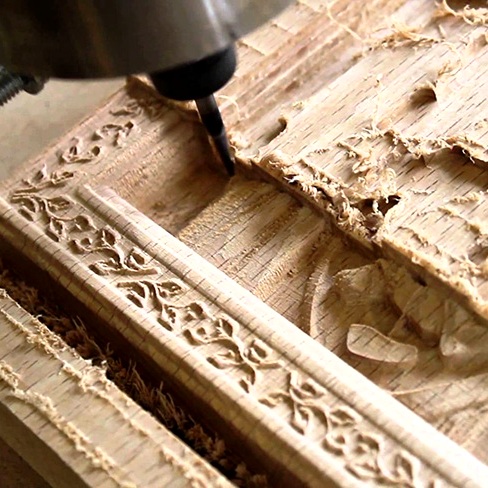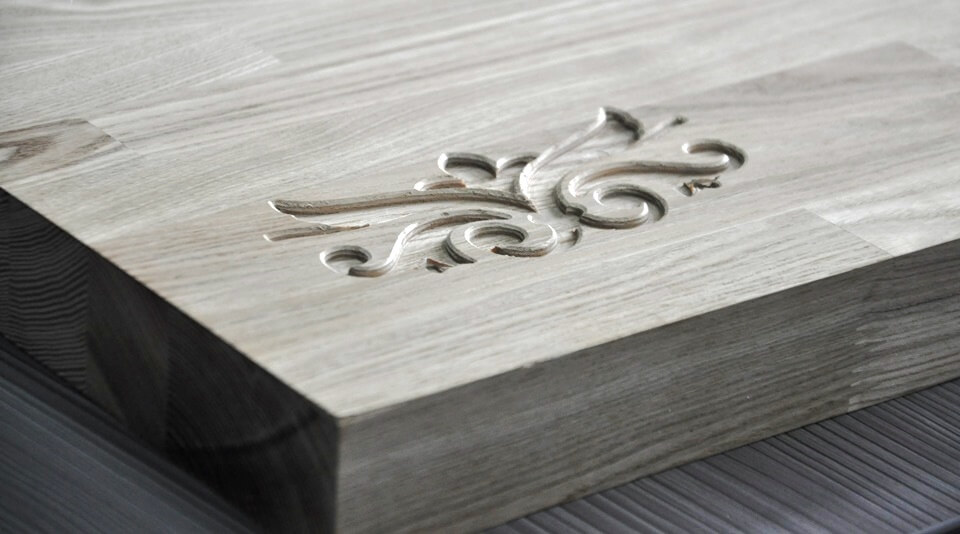
CNC machines have made the work of wood carvers easier and faster. New technologies come to the rescue, but they don't replace manual labor and still can't do miracles. Therefore, basic knowledge of how different types of wood can be processed, what raw materials are not suitable for creating a relief product, what 3d models are suitable for the work - remain essential for the development of business involving CNC machine.
Types of wooden blanks. Classification and features of raw materials:
Wood is considered a convenient and practical material. But if you delve into the technology, it turns out that the choice of suitable material is much more difficult than it seems. It depends on the 3D model, the structure of the wood species and other nuances.
The main classification of raw materials - according to the density of wood varieties:
- soft species (aspen, linden);
- universal (birch, maple);
- hard varieties (beech, oak, mahogany);
- fibrous species (pine, spruce and other conifers).
Another indicator that CNC machine operators always pay attention to is the moisture content of the raw material. Some varieties are naturally juicy and difficult to dry. Others may be too moist due to improper storage. Even blanks from the same type of wood can be of different moisture content, which will affect the final result.
Different species of wood vary in:
- color;
- grain and texture;
- density and splintering ability (whittling).
Even the age of the wood (especially important for hardwoods) and where it grows can affect the result of the CNC machine.
How to choose a workpiece:
Each variety has peculiarities that need to be taken into account if the product is planned to be milled on the machine. When the master cuts with a hand tool, he feels the force of pressure, can in the process change the pattern, if this is required by the workpiece. The machine tool is not able to stop to think and suggest to the operator another way of cutting. It simply does its woodwork, prescribed by a loaded program with a specific 3d model for the CNC, plunging to different depths into the material and removing the right amount of chips.
Here are the basic principles of material selection:
- a preliminary assessment of the 3d model is desirable: whether there are a lot of small patterns, what the product will be used for, what kind of load it should withstand;
- it is important to remember that hard woods are preferred for the CNC machine. Oak, beech, maple and ash are considered universal. Manually from these species is difficult to cut out small patterns, and sharp cutters of the machine cope with this perfectly. As a result, the finished product will really be high-quality and durable;
- practice shows that from budget options for the machine is best suited birch, and from more expensive - beech, oak, ash or pine. They do not pile, easily withstand the impact of milling and practically do not require manual refinement, as well as allow you to realize almost any idea of the designer.

Features of choosing a 3D model for a CNC machine on wood:
Virtual models are a digital image of the future product, with the help of which the milling equipment builds the program. They are:
- simple, on which you can cut furniture parts;
- complex - with drawings and patterns for application on facades and surfaces (in 2d and 3d format - i.e. flat or convex);
- fully three-dimensional - for example, statuettes and three-dimensional sculptures, carved columns and original balusters, etc.
The choice of raw materials depends largely on the model. MDF - wood fibers glued and formed on special equipment - can also be used for CNC woodworking machines. This material is suitable for the simplest ideas: wall panels, cabinet fronts, countertops, etc. MDF can be used when it is planned to apply a simple volumetric pattern and subsequently cover the workpiece with lacquer or paint. Finishing in this case is not only beauty, but also wear resistance of the future product.
The least suitable for complex milling are LDSP and chipboard. When using these materials, choose two-dimensional flat models.
For the manufacture of complex products on 3d models for CNC wood requires skills and knowledge. MDF is not suitable, as it does not have the necessary safety margin. Volumetric image, planned in the layout, it is impossible to apply to the surface, which is not designed for this. Usually for sculptures and bas-reliefs an experienced master chooses those varieties of solid wood with which it is convenient for him to work.
example of a 3d model for a wood CNC machine
What can be made of solid wood?
Wood - a material that is not outdated, fashionable and relevant in our time. It is strong compared to plastic, but light enough compared to metals and stones. It is easy to process, coloring, artificial aging, restoration. All this accounts for its popularity and wide application.
Absolutely all 3d models presented in our online store, suitable for manufacturing on a wood machine. All of them are made in stl format, readable by any suitable programs. So feel free to choose any of them and create!
What else do you need to know about creating wood products on program-controlled milling equipment?
It remains to add that the final result depends not only on the choice of material, but also on the tool with which it was processed. The main working tool of the machine is the milling cutter. It is in contact with the surface, and its quality and sharpness also determine whether the product will be smooth. Cutters for CNC machines on wood are different from their metal counterparts. The main rule is that MDF and solid wood cannot be machined with the same cutter!
The cleanliness of machining is influenced by:
- direction of cutting (type of milling);
- fiber direction;
- machining strategy;
- cutter rotation speed;
- the sharpness of the cutters, and correctly selected shapes.
Even on a workpiece made of universal beech, chipping, scoring, and lint can appear. This means that the cutter is dull or the 3D model for the CNC machine does not match the material.
After cutting on the CNC machine is almost mandatory stage is a manual refinement with grinders and preparing the surface for the application of finish coatings - varnish, paint, etc.
For any questions about working with 3d models purchased in our catalog, you can contact the specialists of the company. We know everything about milling cutters, CNC machines and work with wood. Provide free advice to our customers, so that the end result you are really pleased and you come to us again!
More articles on the topic:
- CNC machine: how to help in business. What to make? Ideas.
- A few facts about CNC machines. Information for beginners.
- 3d models of furniture for manufacturing on a CNC machine.











